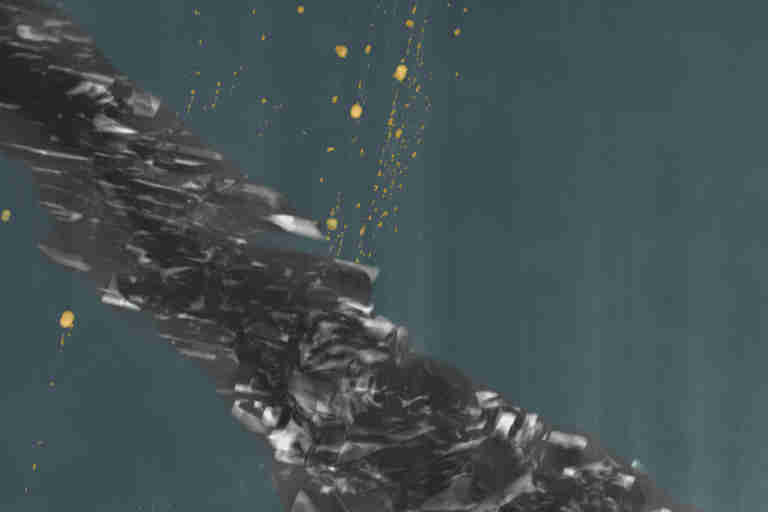 |
| A thin slice of the meteorite sample used in the study |
The new paper about the discovery, published in Nature Communications, describes nanodiamonds found inside of a meteorite set called al-Mahata Sitta. The name means "Station Six" in Arabic, referring to a site nearby where scientists found the meteorites in Sudan. Researchers discovered the meteorites after an asteroid called 2008 TC3 exploded overhead on Oct. 7, 2008.
Scientists looked at the meteorites with an electron microscope, and discovered the diamond type could only be formed under extremely high pressures of 20 giga-Pascals, which is equivalent to an atmosphere that is 20,000 times more dense than Earth’s. The diamonds had chromite, phosphate, and iron-nickle sulfides trapped inside, in a form that scientists call "inclusions." This kind of pressure happens only inside of a planetesimal — a baby planet.
"[Scientists] discovered that the asteroid came from a planetary 'embryo' whose size is between Mercury to Mars," reads a statement from the Federal Polytechnic School of Lausanne in Switzerland. The research was led by Ph.D. student Farhang Nabiei.
 |
| Colorized STEM image showing the diamond phase (blue), inclusions (yellow), and the graphite region (grey). |
It's not the first time scientists found diamonds inside of a meteorite. The other finds, however, revealed diamonds that formed under different conditions. Some were formed in smaller bodies, like asteroids, while other diamonds were created after the shock pressure that occurs when a meteorite slams into the Earth's surface. So studying different types of diamonds helps researchers understand more about how the solar system evolved.
A meteorite that fell in Sutter's Mill, California in 2012 contained diamonds, but the diamond type likely came from a small asteroid. "We suspect that these diamonds are so-called xenoliths. Bits and pieces that originated in the interior of other much larger parent bodies," co-investigator Yoko Kebukawa, who was with Hokkaido University at the time of the research, said in a 2014 NASA statement.
Another kind of diamond called lonsdaleite may be associated with the aftermath of a meteorite impact. In 2014, scientists examined lonsdaleite in a meteorite called Canyon Diablo. "The outcome of the new work is that so-called lonsdaleite is the same as the regular cubic form of diamond, but it has been subjected to shock or pressure that caused defects within the crystal structure," reads a statement from Arizona State University, which participated in the Canyon Diablo research.
In 2010, researchers found ultra-hard diamond in a Finnish meteorite. Researchers found two new forms of naturally occurring carbon that were harder than diamonds created inside Earth. The diamond was formed after the impact with the Earth's surface, researchers said at the time. "The discovery was accidental, but we were sure that looking in these meteorites would lead to new findings," said lead author Tristan Ferroir of the University of Lyon in France at the time.
Read more at Seeker
No comments:
Post a Comment